After having crossed the last kilometres from the fjell under pretty scary driving circumstances (see the previous news post), we were glad to reach Batsfjord. The blizzard had almost disappeared, and the sun was piercing through the clouds. Under here an image from our arrival at Batsfjord, taken through the front window of the car.
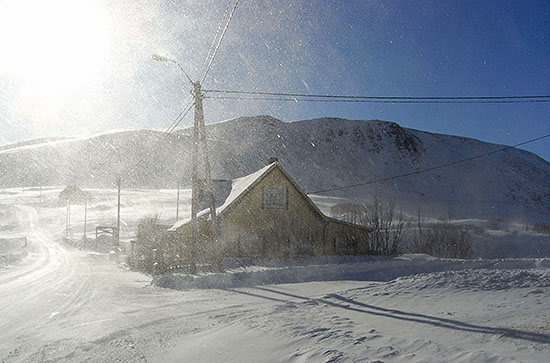
Batsfjord
Batsfjord village is a small harbour village in the North-eastern Part of the Varanger Peninsula. Historically, there were many other villages in the municipality, but they have been abandoned over the years. The main reason is that the fishery has seriously collapsed during the past years. Fish populations went down dramatically over the past decades, due to far too intensive fishing by the Russians and Scandinavian. Nowadays the fish populations seem to recover slowly. Under here an image from the village.
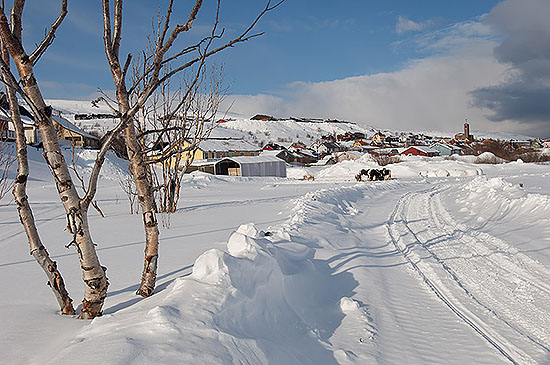
Main reason for our stay in Batsfjord was to observe the huge concentrations of the three Eider species: Common Eider, Somateria mollisima, Steller’s Eider, Polysticta stelleri and King Eider, Somateria spectabilis. Despite the fact that the number of wintering Eiders have also seriously gone down during the past decades, Batsfjord still holds very impressive numbers of them. Literature mentions a decline of 8% per year in Norway between 1985 and 2003. It is unclear, however, whether these declines were genuine, or reflect a redistribution to other wintering areas.
The biggest group of Eiders we came across counted about 1300 individuals, of which Steller’s Eider was the most common species. The group consisted of about 900 Steller’s Eiders, 300 Common Eiders and 70 King Eiders.
Under here some images from the harbour and the large group.
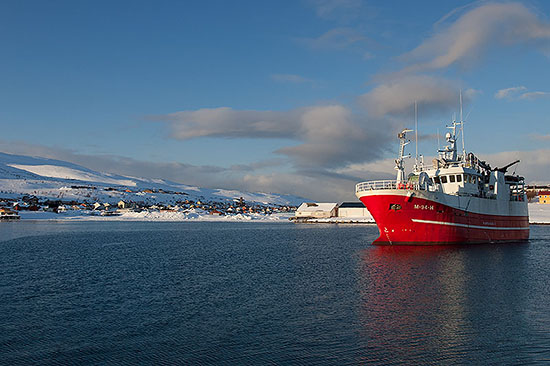
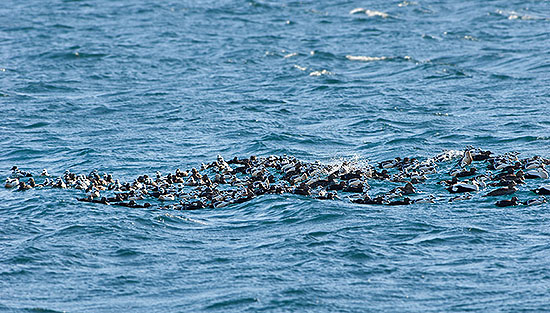
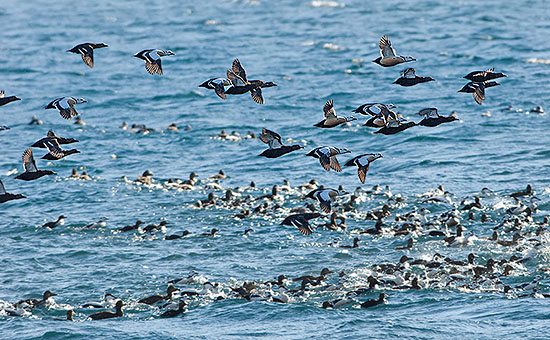
The next image shows a male Steller’s Eider, with its delicate plumage.
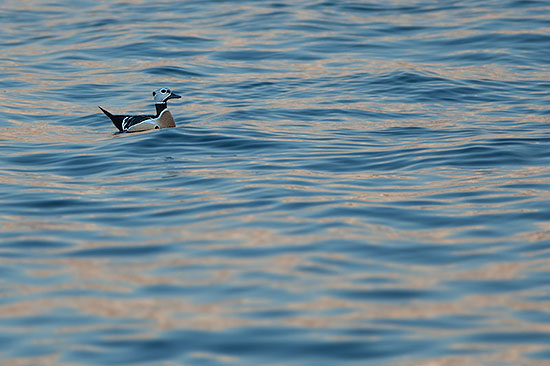
Under here a pair of King Eiders, followed by an image from a male.
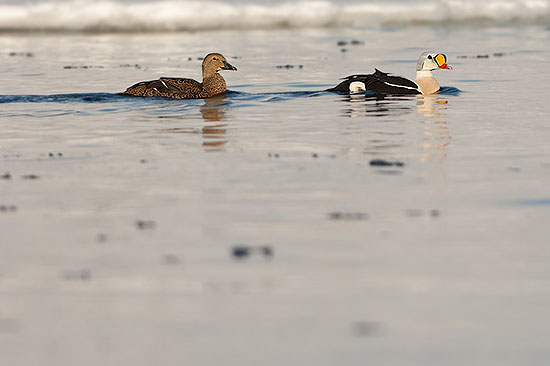
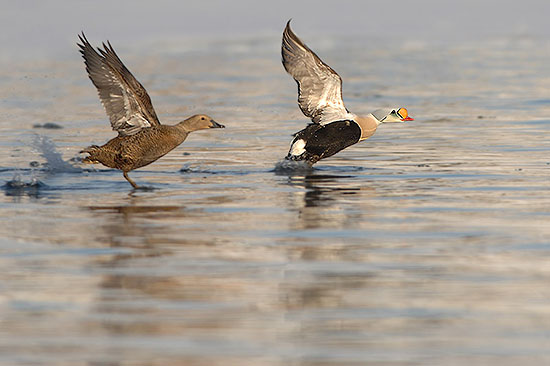
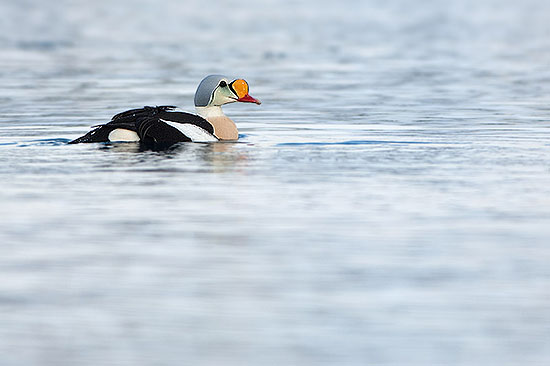
Temperatures had risen meanwhile till minus 10°C. The weather was extremely variable during that time of the year. In fifteen minutes, a bright blue sky could turn into a sky with dark threatening clouds, and a few minutes later it could be snowing heavily. This created often interesting light circumstances.
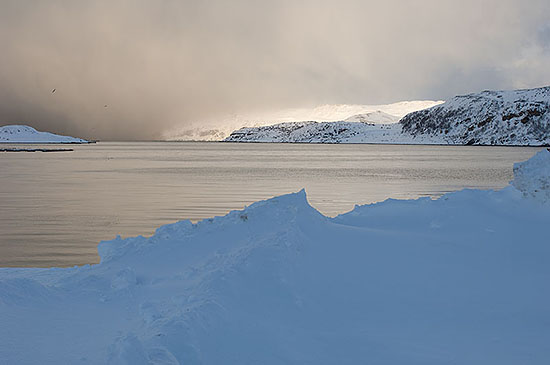
For seeing Northern lights, it was rather hopeless… We had only one night in Batsfjord when the sky was cloudless when we went to sleep. We decided then to look every hour for eventual Northern lights. But three hours later it had already started again to snow. We coped with the same constantly changing weather during the whole trip, so no Northern lights for us…
Kittiwake, Rissa tridactyla is a common Gull in the Arctic Harbours, which often breeds on old buildings. Under here some images from the Kittiwakes.
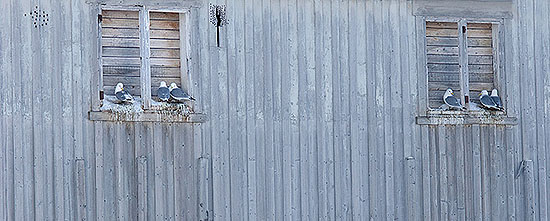
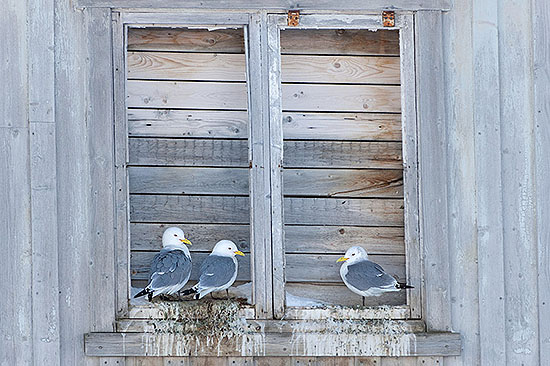
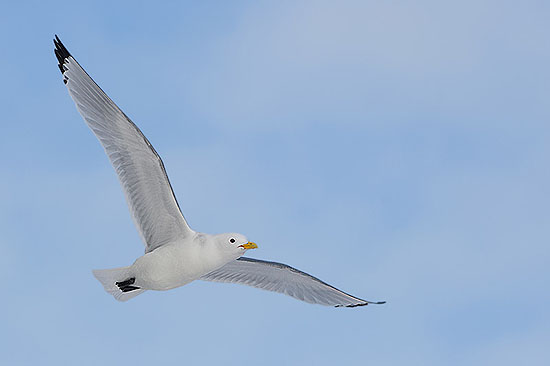
Vadso
After having left Batsfjord, we drove back to the South, a little Eastwards to Varangerbotn and then again Northwards along the border of the most Eastern Part of the Varangerfjord. Our next stop was Vadso. Again Eider groups were present, but in smaller numbers compared to Batsfjord. Under here some images from Common Eiders and a male Long-tailed Duck, Clangula hyemalis.
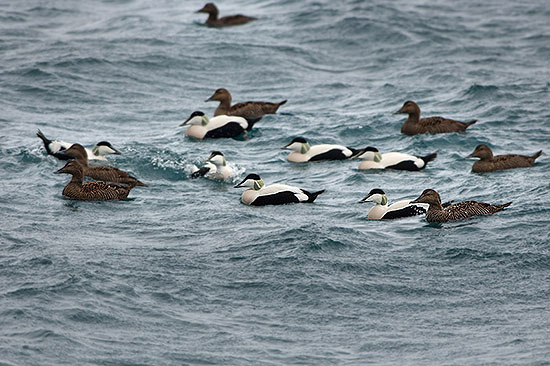
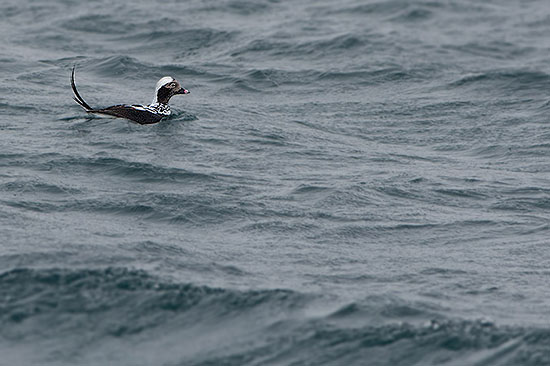
Ekkeroy
Our next stop was Ekkeroy, where an impressive colony of Kittiwakes is nesting along the Cliffs. Despite the fact that the temperatures had become slightly more moderate (around – 5 °C), the weather conditions were extremely harsh above the cliffs: it was hailing and the wind was reaching speeds of 70 to 80 kilometres per hour. Although they were pretty small, it felt like every hailstone was cutting like a knife in my face. But I soon forgot the pain when I reached the cliffs: I was immediately struck by the beauty of the Kittiwakes who flew regularly out above the rough sea. The sea had a dark almost blackish to green colour. The gulls seen from above fighting against the harsh weather elements above the sea created unique photo opportunities. Under here a first image of the gulls in the hail storm.
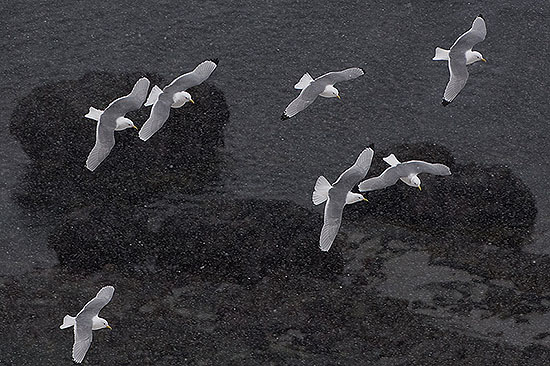
From time to time the gulls would all leave the colony simultaneously. They would surf above the waves all driven simultaneously by the wind in the same direction. It was like they had all made a deal about taking part in the choreography of a 'marine ballet'. They did this about every ten to twenty minutes. After one or two hours I got the shots I wanted and it was time to walk back and warm up.
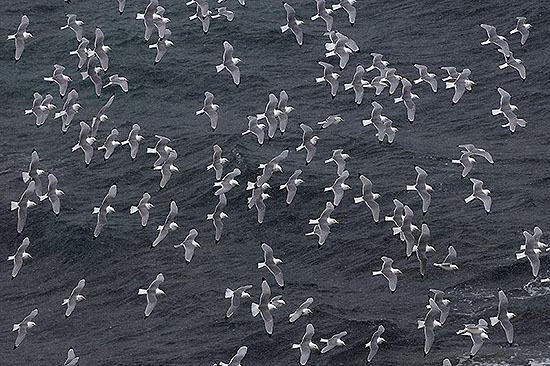
Under here my favourite image.
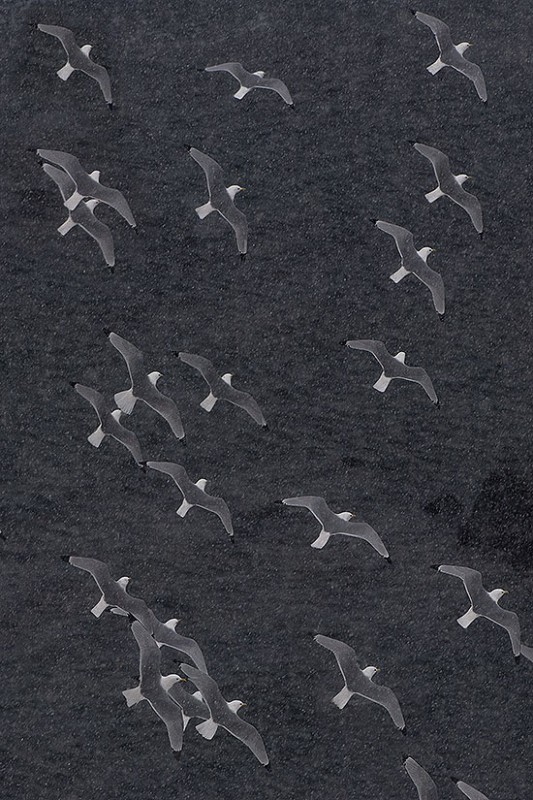
Kiberg
When we headed further northwards our next stop was Kiberg. A group of 70 Steller’s Eiders was present in the very small harbour, which was plenty of boats. This meant good opportunities to hide between the boats and to wait till the birds would come closer. This turned out quite successfully, under here some images.
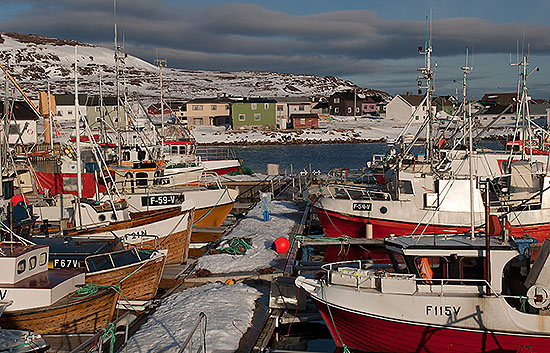
Under here an image from a Common Eider, Somateria mollisima.
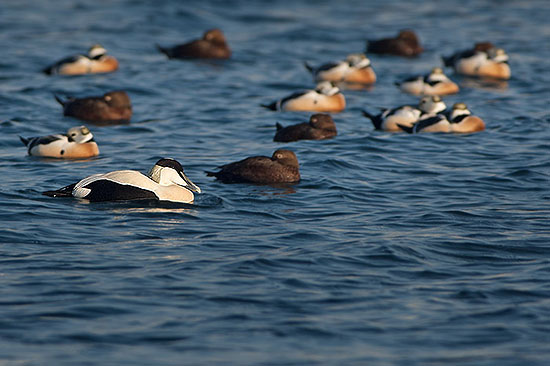
The next images show Steller's Eiders, Polysticta stelleri.
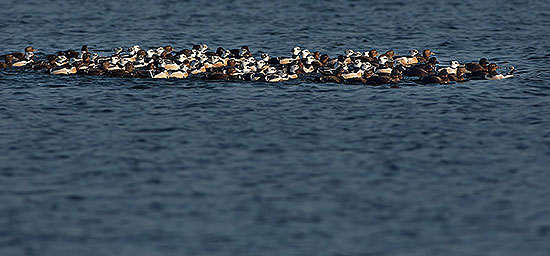
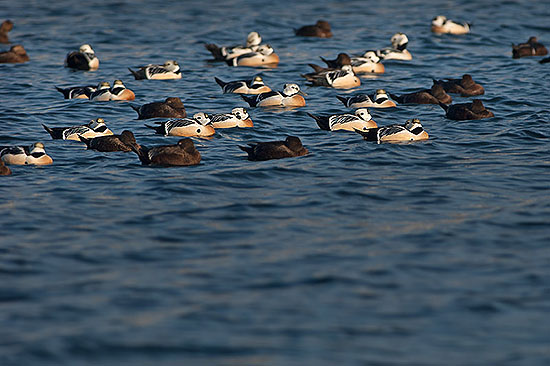
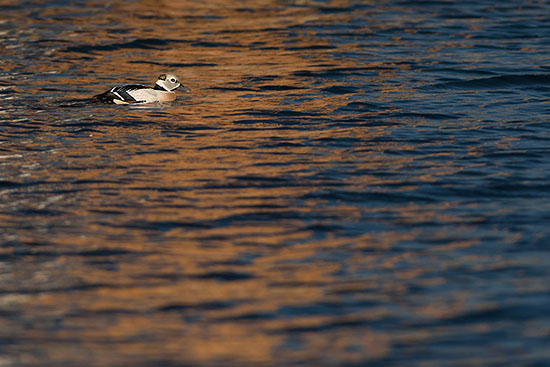
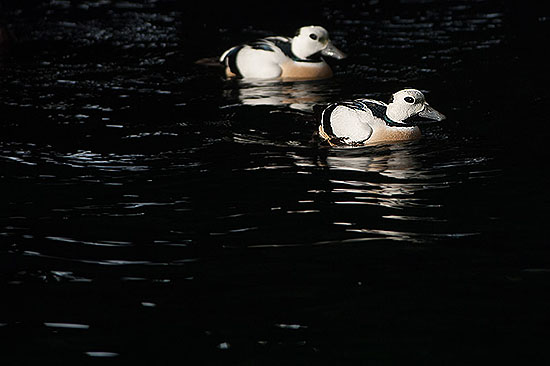
Vardo
The most Northern place we reached was Vardo. See the image under here.
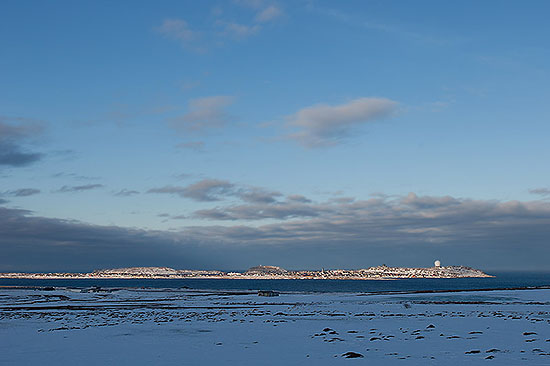
The first day, we had to deal with very dark weather circumstances and quite some snow. Those circumstances were ideal to take pictures from gulls in flight, the sky was greyish and the birds were illuminated from underneath by the reflections of the light in the snow. Under here some images from Great Black-backed Gull, Larus marinus, Glaucous Gull, Larus hyperboreus and European Herring Gull, Larus argentatus.
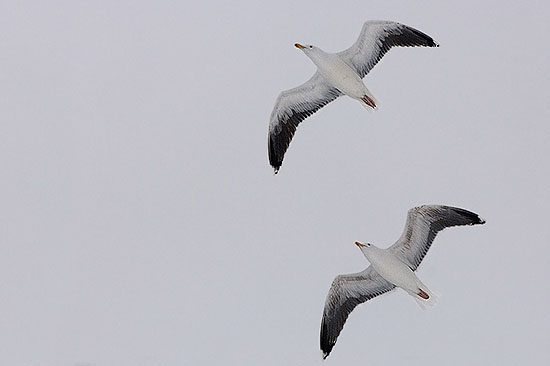

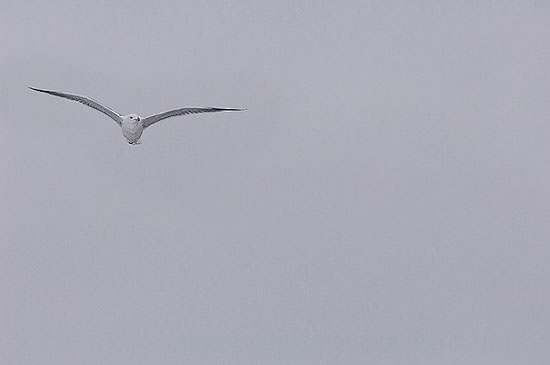
Glaucous Gull was a quite common species in the harbour. Under here an image from a first calendar year bird.
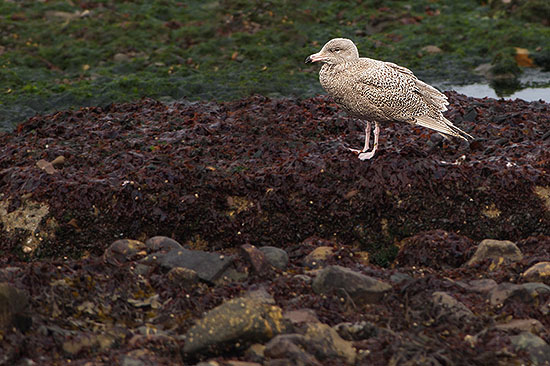
From the harbour one could easily see Hornoya, a small isolated off-shore island with impressive cliffs. The island harbours large colonies of seabirds, such as Kittiwakes, Shags, Puffins, Razorbills and Brünnich’s Guillemots. The sea was very rough on the first day, so it was not possible to organise a trip to the island. Our time was too short to organise on the next days a boat trip to Hornoya, but we definitely want to visit the island once! Under here an image of the colony seen from the harbour. Plenty of birds were flying up in panic, probably because of a White-tailed Sea-Eagle or a Gyr Falcon.
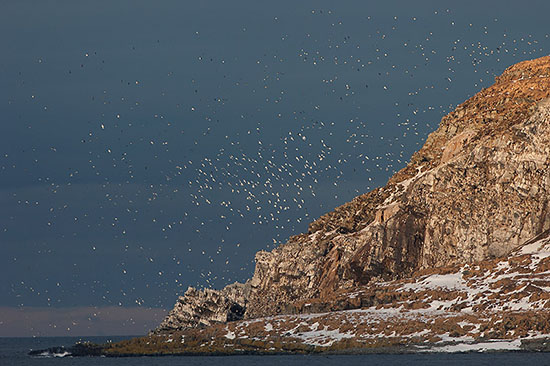
Under here an image from Rock Pipit, Anthus petrosus and Purple Sandpiper, Calidris maritima, which were both present in small numbers in the harbour.
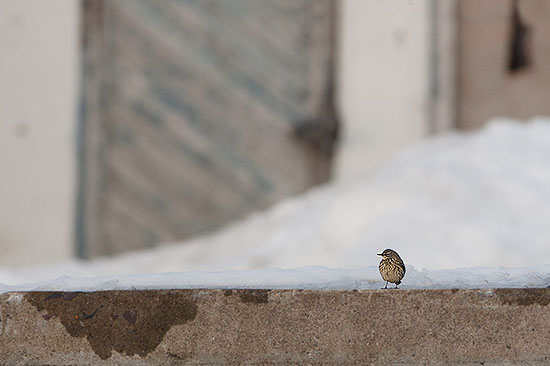
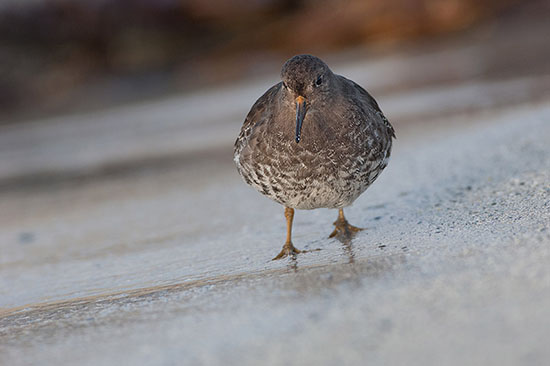
Again small groups of Stellers’s Eider, of up to 50 birds were present in the harbour. Under here, an image from two males Steller’s Eider, involved in a quarrel. The next two images show the duller coloured female with her splendid deep blue wing feathers, and a male.
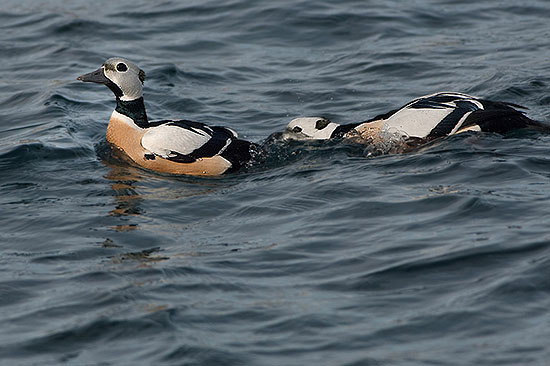
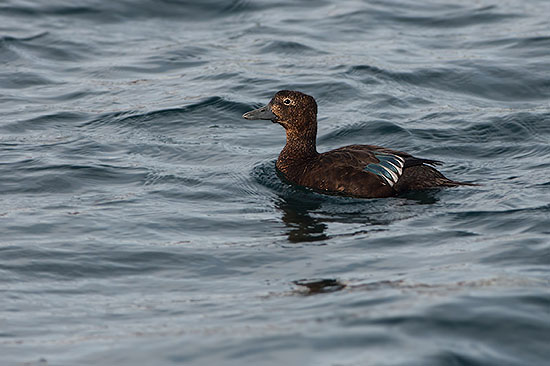
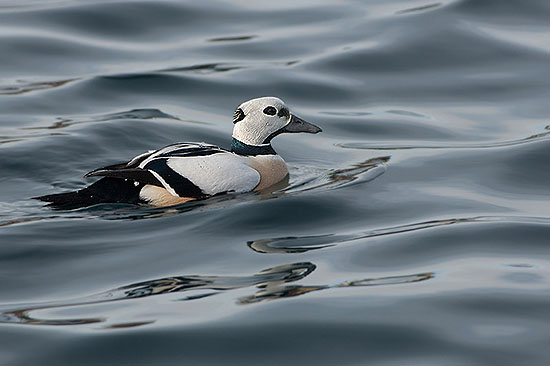
Nesseby
On our way back to the South we had a short stop in Nesseby, an area with mudflats which holds during Spring migration large numbers of Red-necked Phalarope. We were definitely too early for this species, but Purple Sandpipers moulting into their pretty summer plumage were present in large numbers.
Just after we arrived at Nesseby, a large group of people went to the small church of Nesseby. Apparently there was marriage, which was quite a weird sighting contrasting with the landscape of the vast frozen mudflats as a background.
Under here, an image with me in the background, practising the art of ‘the unpersuadable ignoring of a romantic wedding’…
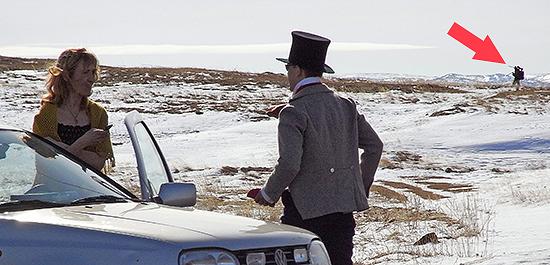
A large group of Snow Buntings, Plectophenax nivalis, with nice males in summer plumage was foraging along the short vegetation around the mudflats. Under here some images.
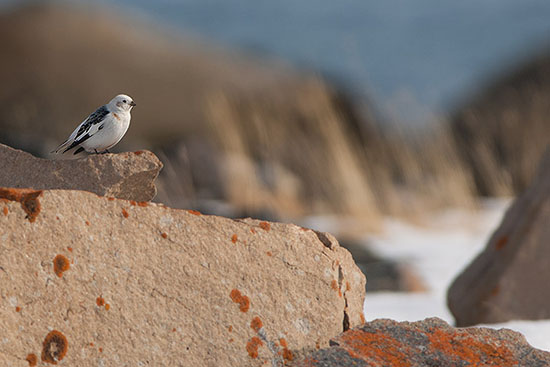
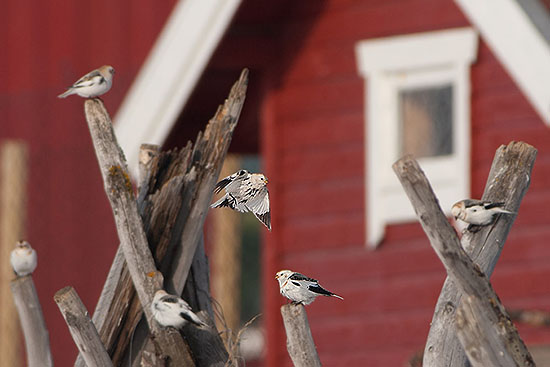
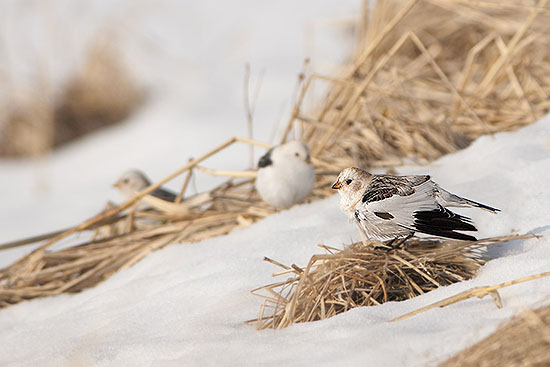
Finally, some images from the Purple Sandpipers, Calidris maritima.
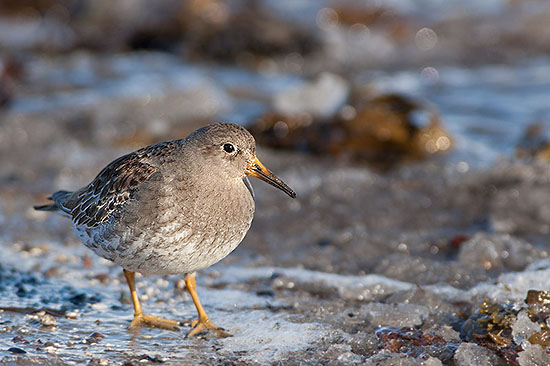
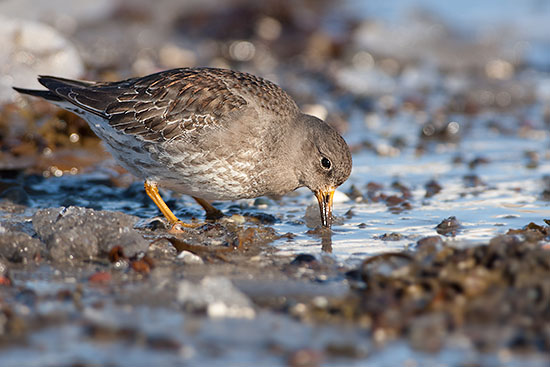
For those interested in seeing the images on a larger scale, you can have a look at my portfolio from this trip.
